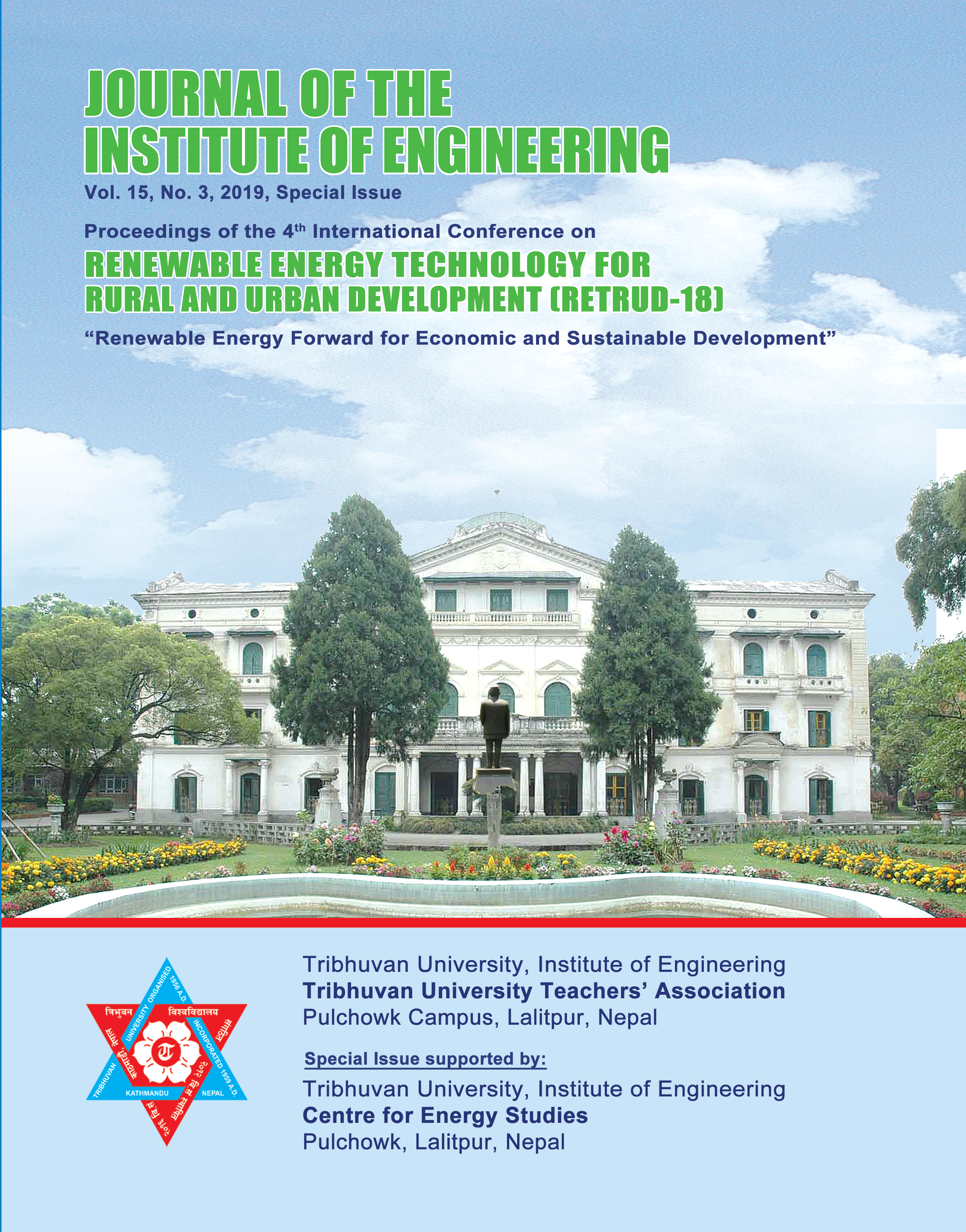Effect of Photoanodes on the Performance of Dye-Sensitized Solar Cells
DOI:
https://doi.org/10.3126/jie.v15i3.32008Keywords:
Dye-Sensitized Solar Cells, Titania Nanopowders, Zinc Oxide Nanorods, Photovoltaic Properties, Band Structure, Density of States, Density Functional TheoryAbstract
Dye sensitized Solar cell (DSSC) is a photo-electrochemical system which converts solar energy into electrical energy. In the present era DSSCs takes so much attention because of their considerably high efficiencies at a comparably low production cost. The nanostructured electrode plays a vital role in device properties. Originally, the nanostructured TiO2 were widely used as DSSC electrodes. Further, nanostructured ZnO has shown a great deal of research interest as the electrode material in DSSCs due to some of its fascinating properties. Compared to other semiconductors, it has unique properties such as large exciton binding energy, wide band gap, high breakdown strength, cohesion and exciton stability. In this paper, the construction and electron transport mechanism of DSSCs devices are described and a comparison of performances of DSSCs fabricated with ZnO or TiO2 photo electrodes was made in terms of its device parameters. This is further correlated with the band structure & density of states (DOS) of ZnO and TiO2 using Density functional theory (DFT) and finally the photovoltaic performance of ZnO and TiO2 based DSSCs was discussed to elucidate the differences.
Downloads
Downloads
Published
How to Cite
Issue
Section
License
The Copyright is held by Journal of the Institute of Engineering, IOE, TU




